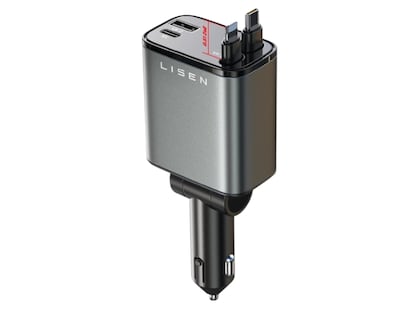The problem of neuronal connectivity: how physicists can contribute to neuroscience
Modern science is highly interdisciplinary: very different scientific disciplines work together to understand a rich variety of phenomena, from the Big Bang to the human brain. Here we show how physicists can contribute to modelling neuronal connectivity and understanding brain disorders.
ˇ°If the brain were so simple we could understand it, we would be so simple we couldnˇŻtˇ±. As Lyall Watson says, the brain is one of natureˇŻs most complex structures and possibly the masterpiece of evolution. Although the organisation of the brain seems relatively simple at first glance, with millions of tiny computing units known as neurons highly connected to one another, the final outcome is certainly not.
What makes the brain such an extraordinary computing machine is the fact that the connections between neurons constitute both a hard-wired configuration and a flexible one. The former defines the basic layout crucial for the system to function effectively, similar to the major roads of a big city. The latter provides the adaptability necessary to allow changes on the basis of our experiences. Since birth, our brains have been frenetically wiring and rewiring millions of connections a day. In this way, like the delicate hammering of a sculptor, we slowly build ourselves and learn to see and hear, to play and communicate, and, ultimately, to be part of a complex society.
The accuracy of the connections between neurons is as important for the brain as the neurons themselves, or even more. Many neurological disorders, such as AlzheimerˇŻs disease or schizophrenia, have their origin in the gradual degradation or malfunction of neuronal circuitry. However, the number of neurons and connections is so immense that it may take centuries to complete a detailed map of the human brain. Nevertheless, the problem is so fascinating that in recent decades other disciplines have joined in the endeavour.
My research group at the Department of Structure and Constituents of Matter of the University of Barcelona is working on the development of new experimental techniques that use concepts of physics and apply them to neuroscience, with the goal understanding the intricacy of neuronal connectivity and how it affects neurological disorders. One of the diverse physical concepts that we use in this quest is known as percolation.
A way to describe percolation is to imagine that a neuronal network is a gigantic city, with the thousands of neurons acting as crossings between streets and the millions of connections between neurons represented by the streets themselves. Some streets would be narrow and short, forming weakly connected areas, whereas other streets would be major avenues or city ring roads extending large distances, thus constituting strong communication hubs. The traffic in some streets would converge into a crossing, representing input connections onto a neuron, whereas the streets leaving the crossing would be equivalent to output connections. With appropriate synchronisation by traffic lights, cars could flow efficiently through the network and transport information to distant parts of the city.
Imagine now that one day the mayor wants to ˇ°play physicsˇ± and starts distributing at the crossings around the city police officers, who reduce efficiency or stop it completely. As the number of officers increases, some areas will become reachable only by taking a very long diversion, whereas other areas will be completely disconnected. Once the number of policemen reaches a critical level, the city would break off into isolated areas or clusters.
This critical level is importantˇŞit characterises the ˇ°percolation pointˇ± of the street network. If the mayor looks carefully at the results of the experiment, he will be pleased to observe that the percolation idea provides useful information about the connectivity of the cityˇŻs traffic networks without the need to know the precise street layout. For instance, the number of police officers required to reach the critical point would be related to the average number of streets converging to a crossing, and the areas that need more police officers would correspond to large communication hubs.
The beauty of physics is that a general concept like percolation can be applied to a completely different system to determine its properties. The price that one pays is the loss of detailˇŞwe canˇŻt get a precise map of connections in the case of neuronal networks. However, the information obtained is powerful and helps us to elucidate the prominent factors of a highly complex system.
In our laboratory, we grow on small glass plates neuronal networks with very diverse ˇ°street layouts,ˇ± which act as model systems of a complex nervous system. For instance, we can prepare neurons distributed in a grid, similar to the squared lattice system of the ˇ°Eixampleˇ± of Barcelona, or in more clustered and varied network, akin to the road system in Rome. We then investigate these ˇ°engineered neuronal culturesˇ± using the percolation concept and compare different network configurations, characterising their major traits, similarities, and differences.
Overall, our research beautifully helps advancing our comprehension of neuronal connectivity and its importance for the functioning of the human brain. By working side by side with neuroscientists and neurologists to investigate and model what goes wrong in the network of a malfunctioning brain, we hope to help people with neurological disorders.
Tu suscripci¨®n se est¨˘ usando en otro dispositivo
?Quieres a?adir otro usuario a tu suscripci¨®n?
Si contin¨˛as leyendo en este dispositivo, no se podr¨˘ leer en el otro.
FlechaTu suscripci¨®n se est¨˘ usando en otro dispositivo y solo puedes acceder a EL PA?S desde un dispositivo a la vez.
Si quieres compartir tu cuenta, cambia tu suscripci¨®n a la modalidad Premium, as¨Ş podr¨˘s a?adir otro usuario. Cada uno acceder¨˘ con su propia cuenta de email, lo que os permitir¨˘ personalizar vuestra experiencia en EL PA?S.
?Tienes una suscripci¨®n de empresa? Accede aqu¨Ş para contratar m¨˘s cuentas.
En el caso de no saber qui¨¦n est¨˘ usando tu cuenta, te recomendamos cambiar tu contrase?a aqu¨Ş.
Si decides continuar compartiendo tu cuenta, este mensaje se mostrar¨˘ en tu dispositivo y en el de la otra persona que est¨˘ usando tu cuenta de forma indefinida, afectando a tu experiencia de lectura. Puedes consultar aqu¨Ş los t¨¦rminos y condiciones de la suscripci¨®n digital.




























































